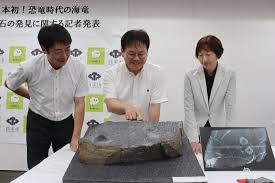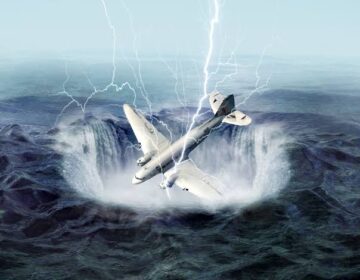In a remarkable turn of events, paleontologists have uncovered a 220-million-year-old ichthyosaur fossil concealed within the walls of the Nariwa Museum of Art in Takahashi City, Okayama Prefecture, Japan.
Long believed to be a mere Monotis bivalve, this extraordinary find, which had gone unnoticed for decades, was confirmed during an educational program led by Professor Takafumi Kato and his colleague Dr. Hirokazu Yukawa on July 26, 2023.
Ichthyosaur fossil confirmed for the first time in western Japan — also marks Japan’s first discovery of a Late Triassic ichthyosaur.
Researchers have confirmed that a fossil discovered in Takahashi City, Okayama Prefecture, is the first ichthyosaur ever found in western Japan.
The fossil, embedded in rock from the Late Triassic period (about 220 million years ago), was verified through collaborative research by Okayama University of Science and other institutions.
The finding was formally announced by Professor Takafumi Kato of the Department of Dinosaur Paleontology during the Paleontological Society of Japan’s annual meeting at Hokkaido University on June 29.
This is the first time an ichthyosaur has been identified in Japanese geological layers from this particular era.
Paleontologists specializing in ichthyosaurs have highlighted the rarity of such fossils, describing specimens from this time period as “exceptionally rare worldwide.”
The fossil was encased in a block of muddy sandstone that measures 59 centimeters wide, 34.5 centimeters deep, and 26 centimeters high.
The rock had been displayed at the Nariwa Museum of Art in Takahashi City, where it was believed to be a fossil of Monotis, a bivalve commonly used as a marker fossil for the Late Triassic.
Museum records indicate that the rock was part of the collection even before the museum’s renovation in 1994 and had originated from Takahashi.
The turning point came on July 26, 2023, when Professor Kato was leading a hands-on educational program for middle and high school students.
While giving a lecture in the museum’s fossil gallery, he and his longtime colleague Dr. Hirokazu Yukawa from the Fukui Prefectural Dinosaur Museum took a closer look at the rock.
It was then that they spotted a large bone fragment embedded in the stone. “Wait—that’s a bone!” Kato exclaimed.
A more detailed examination revealed a porous, spongy interior surrounded by a thin layer of compact bone—anatomical features typical of reptiles adapted to life in the sea.
Drawing on his background in paleontology, Kato immediately recognized the fossil’s potential significance.







